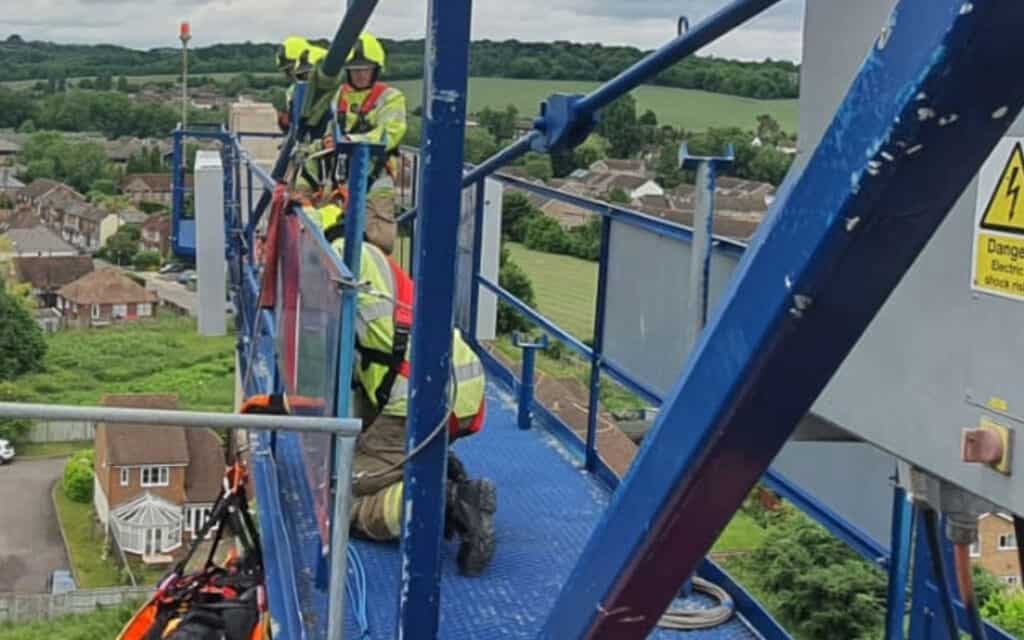What happens if someone gets taken ill when working at height? Well, it’s exactly the sort of unexpected situation our firefighters train for. If access is tricky, and special equipment is required, they are likely to be called out to assist our partner agencies and facilitate a safe rescue.
When it comes to precarious locations, the top of a crane is definitely up there – in this case 40 metres above ground! So when an offer is made for crews to practice their skills in a realistic environment, it’s an opportunity to good to be ignored!
Crew Commander Matt O’Sullivan from Beaconsfield White Watch shares his crew’s experience when they joined up with Amersham firefighters in Wooburn Green where construction company Stepnell have a tower crane in operation . . .
Training for the unexpected:
“It is always a treat for crews to get to train on structures in our local areas. Of course, most fire stations have drill towers on site which are designed and tested for this purpose, but from experience you just cannot beat getting out and practicing our skills on real-world structures every now and again.
It is all well and good training on a four-storey building with purpose-built anchor points, but what happens when you find yourself at the top of a 40-metre structure for the first time and must improvise a solid anchor point from what is available?
Of course, there is a lot of planning and paperwork to complete before such an event can take place, but it is well worth the effort to secure a good training session, and Stepnell’s crane operators were kind enough to work with us to allow this session to go ahead.
The aim of the day:
The purpose of the exercise was to familiarise two crews from Amersham and Beaconsfield with cranes, and for them to get to use the working at height equipment to perform a rescue from the top of the tower crane. Teamwork, a good plan, and excellent communication would be the keys to success.
Casualty lift:
The first crew used a 3:1 system to lift the casualty onto the jib.
The structure of the crane itself provided plenty of opportunities to create a good anchor point. The restricted room available made efficient use of the rescue hauler to get the job done more challenging than normal.
The rescue hauler must be pushed backwards and forwards to achieve the lift. If you can only push it half a metre along the line from your anchor, you are in for a long day! With a change of direction, using the length of the jib to their advantage, the crew set up a good system of work and were able to push the hauler at least three metres from their anchor point. This made the process of raising the casualty nice and efficient.
Once the first crew had raised the casualty safely onto the jib, they dismantled their working at height lifting system, re-stowed everything in the bag, and the two crews swapped over.

Casualty rescue:
The second crew now had a casualty on the jib ready for them to rescue. Once they had climbed up to the working area the crew went about setting up a safe lowering system using different anchor points from the first team. It was not long before our casualty, safely wrapped in a Chrysalis Stretcher, was being lowered back down to the ground.
Outcome:
The aims and objectives of this drill where both met.
The crews had a great familiarisation session on the crane and were able to successfully use our working at height equipment to raise and lower a casualty from the jib.
Thanks again to the Stepnell team for allowing us to have a good training session on their crane.”

